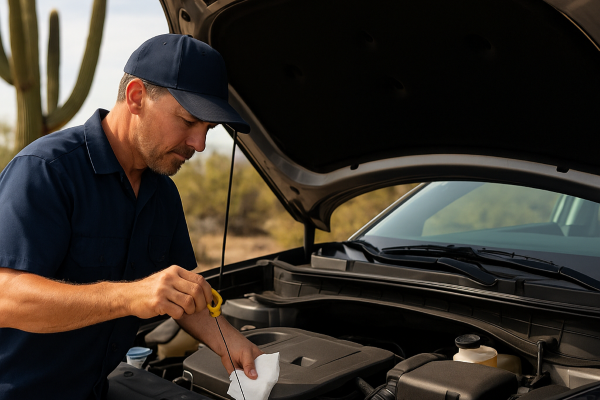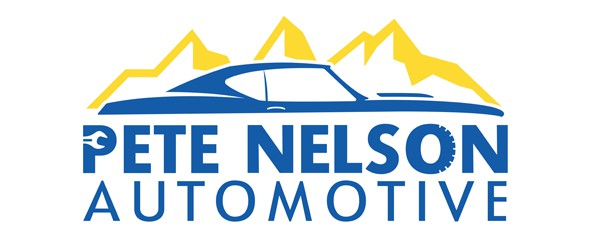 Arizona’s harsh climate demands special attention to vehicle maintenance. The extreme heat and dust can wear down car parts quickly. Regularly check and replace belts and hoses to prevent overheating or loss of power steering. The high temperatures can also cause brake fluid to overheat, affecting braking performance. It’s essential to inspect and replace brake fluid, pads, and rotors frequently.
Arizona’s harsh climate demands special attention to vehicle maintenance. The extreme heat and dust can wear down car parts quickly. Regularly check and replace belts and hoses to prevent overheating or loss of power steering. The high temperatures can also cause brake fluid to overheat, affecting braking performance. It’s essential to inspect and replace brake fluid, pads, and rotors frequently.
Protect your car’s interior from the sun’s relentless UV rays. Use sunshades and UV protectants to prevent cracking and fading. Keep an emergency kit in your vehicle, complete with water and basic tools. This is crucial in Arizona’s extreme heat, where breakdowns can happen unexpectedly.
Here is a quick checklist for Arizona drivers:
- Belts and Hoses: Regular inspection
- Brake Fluid and Pads: Frequent checks
- Sun Protection: Use sunshades and UV protectants
- Emergency Kit: Include water and tools
By following these tips and staying vigilant, Arizona drivers can better protect their vehicles from the state’s extreme conditions.
1. Regular Engine Oil Checks and Changes
Regular engine oil checks and changes are vital for car maintenance, especially for Arizona drivers. The extreme heat can speed up oil degradation, which may lead to engine damage. Follow these oil-related car care tips to maintain vehicle health and efficiency:
- Frequent Oil Changes: Adjust your oil change frequency based on Arizona’s hot climate to prevent sludge build-up.
- Monitor Oil Levels: Regularly check and replenish your engine oil to avoid potential damage due to rapid oil breakdown in high temperatures.
- Change Oil Filters: Replace your oil filter with every oil change or as your car manual advises to keep contaminants at bay.
- Observe Scheduled Maintenance: Stick to a regular oil change schedule to enhance engine longevity and prevent costly repairs.
|
Task |
Frequency |
|---|---|
|
Oil Change |
Adjust for extreme heat |
|
Oil Filter Replacement |
With every oil change |
|
Oil Level Check |
Regularly |
Arizona’s climate demands diligence in oil maintenance to keep your car running smoothly. Prioritize this preventative maintenance to ensure optimal engine performance and avoid unexpected breakdowns.
2. Cooling System Inspection and Upkeep
Maintaining your cooling system is vital, especially in Arizona’s scorching heat. Regularly checking and topping off coolant levels ensures your system functions effectively in high temperatures. It’s essential to flush the cooling system according to your vehicle’s schedule. This helps maintain optimal performance and prevents overheating.
Inspecting hoses and radiators for leaks or wear is crucial. Doing so helps you avoid potential breakdowns. Ensure your radiator fan and thermostat work correctly, especially during sizzling summer months. This is key for an efficient cooling system.
To prevent failures, replace deteriorating hoses and clamps. This reduces the risk of overheating, keeping your car running smoothly.
Key Cooling System Tips:
- Check coolant levels regularly.
- Flush the cooling system as recommended.
- Inspect hoses and radiators for signs of wear.
- Ensure the radiator fan and thermostat function properly.
- Replace worn hoses and clamps to avoid failures.
By following these tips, Arizona drivers can keep their cooling systems in top shape, ensuring reliable performance. This preventative maintenance is essential for driving in extreme heat.
3. Protecting Your Car Battery from Heat
Arizona’s high temperatures can harm your car battery. Excessive heat causes battery fluid to evaporate. This can lead to internal damage and affect the charging system. In temperatures over 95 degrees, corrosion can speed up. This may cause overcharging issues and reduce battery life.
It’s important to have your battery tested regularly, especially if it’s over two years old. This can help you avoid being stranded. Keeping the battery terminals clean is also crucial. Clean terminals ensure a good connection, helping to combat the wear from Arizona’s intense heat.
Here are some tips for maintaining your car battery:
- Test your battery if it’s over two years old.
- Keep battery terminals clean.
- Park in shaded areas when possible.
Battery Care Checklist:
|
Task |
Frequency |
|---|---|
|
Battery test |
Every 6 months |
|
Terminal cleaning |
Monthly |
|
Parking in shade |
As often as possible |
By following these tips, you can help protect your car battery from extreme heat and extend its life.
4. Tire Care and Maintenance on Hot Asphalt
Driving on Arizona’s hot asphalt requires vigilant tire care. The scorching pavement can lead to high tire temperatures, increasing the risk of blowouts, particularly in underinflated or worn-out tires. Regularly checking tire pressure is crucial in these hot conditions. High temperatures cause air inside tires to expand, which can lead to overinflation.
Key Tire Care Tips:
- Check Tire Pressure: Inspect tire pressure often, especially during heat waves. Aim for the manufacturer’s recommended PSI.
- Inspect Tire Tread: Ensure treads have adequate grip. This is essential during sudden summer monsoon rains, which can make roads slippery.
- Monitor for Wear: Hot weather accelerates tire wear and damage. Frequent inspections help ensure they stay in top condition.
|
Tire Maintenance Checklist |
Action |
|---|---|
|
Check Tire Pressure |
Maintain the recommended PSI |
|
Inspect Tire Tread |
Ensure adequate grip and depth |
|
Regular Tire Inspections |
Check for wear and damage |
By following these car maintenance tips, Arizona drivers can navigate the roads safely, even in extreme heat. Regular attention to these details can help mitigate the risks of driving on hot asphalt.
5. Ensuring Optimal Air Conditioning Performance
Ensuring optimal air conditioning performance is vital for Arizona drivers. Regular checks by a qualified technician at Pete Nelson Automotive are essential, especially if the system shows marginal operation. Replace cabin air filters as directed in your owner’s manual to maintain efficient air conditioning.
Remember, air conditioning isn’t just for cooling—it’s also for defrosting. The system sends cold air to clear fogged-up windshields. During Arizona’s hot summers, a properly functioning air conditioning system can prevent engine breakdowns from overheating.
Here’s a quick checklist:
- Regular Inspections: Have a technician at Pete Nelson Automotive check your AC system.
- Cabin Air Filters: Replace according to your owner’s manual.
- Cooling and Defrosting: Ensure the system clears foggy windows.
- Overheating Prevention: Confirm your AC system works well to avoid engine issues in extreme heat.
By following these steps, you can avoid the primary maintenance concern—heat-related malfunctions—and ensure your comfort on the road.
FAQs
1. How often should I check tire pressures in Arizona’s extreme temperatures?
Arizona’s scorching heat causes air inside tires to expand, so tire pressures should be checked at least once a month—and always before long trips. Proper inflation improves fuel efficiency and reduces the risk of blowouts on hot pavement.
2. Why is wheel alignment important for car care and fuel efficiency?
A correct wheel alignment ensures even tire wear, safer handling, and up to a 10% boost in fuel efficiency. If your vehicle pulls to one side or your steering wheel is off-center, schedule an auto repair appointment with Pete Nelson Automotive in Sun City for a precise alignment.
3. How do extreme temperatures affect motor oil and other fluids?
In Arizona’s heat, motor oil thins out faster, transmission fluid can overheat, and power steering fluid can degrade. Follow the manufacturer’s high-temperature service schedule and let Pete Nelson’s Automotive top off or replace fluids to protect vital engine and fuel systems.
4. What should I inspect on my cooling system before summer road trips?
Check refrigerant levels for your A/C, inspect hoses for cracks, and confirm coolant is at the proper mix ratio. Low refrigerant or coolant can cause the engine to overheat in extreme heat—Pete Nelson Automotive can pressure-test your system to keep you cool.
5. How often should I replace windshield wipers and refill windshield washer fluid?
The desert sun dries out rubber blades quickly. Replace windshield wipers every 6-12 months and keep your windshield washer fluid reservoir filled with bug-removal formula to maintain visibility in dusty conditions.
6. Do jumper cables lose effectiveness in high heat?
Heat doesn’t directly affect jumper cables, but batteries drain faster in extreme temperatures. Always keep quality cables in your emergency kit and have Pete Nelson’s Automotive perform a battery test during routine service.
7. When should spark plugs be inspected on high-mileage vehicles in Arizona?
High temperatures and dusty air can foul spark plugs sooner. Inspect them every 30,000 miles—or sooner if you notice misfires or reduced fuel efficiency. Fresh plugs help maintain engine performance in Arizona’s demanding climate.
8. Why is regular auto repair at Pete Nelson’s Automotive the best way to protect my vehicle?
Local road conditions and heat require specialized car care knowledge. Pete Nelson Automotive in Sun City provides comprehensive maintenance—fluid checks, alignments, battery tests, and more—to keep your vehicle reliable year-round. Call (623) 974-4723 to schedule your next service.


